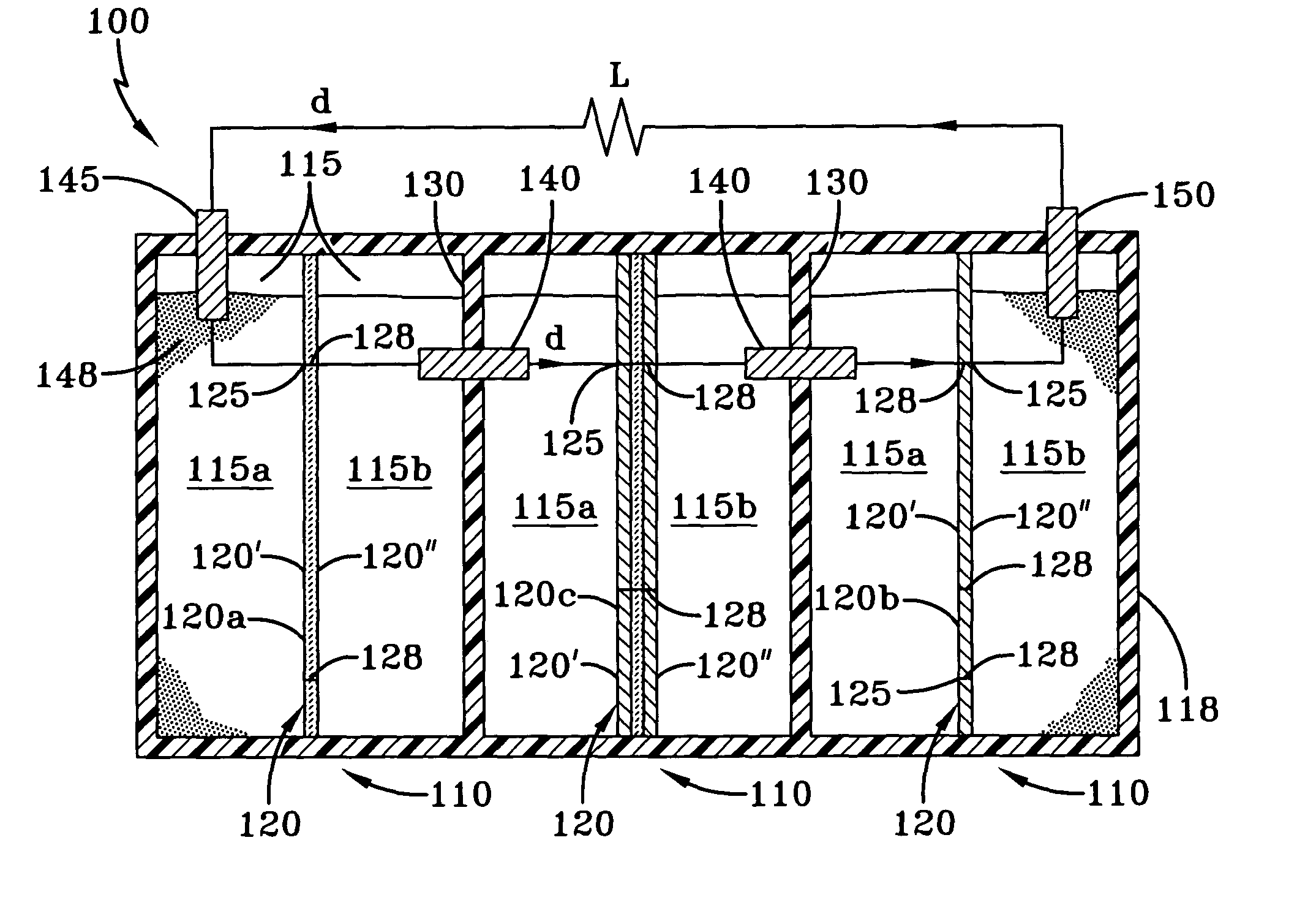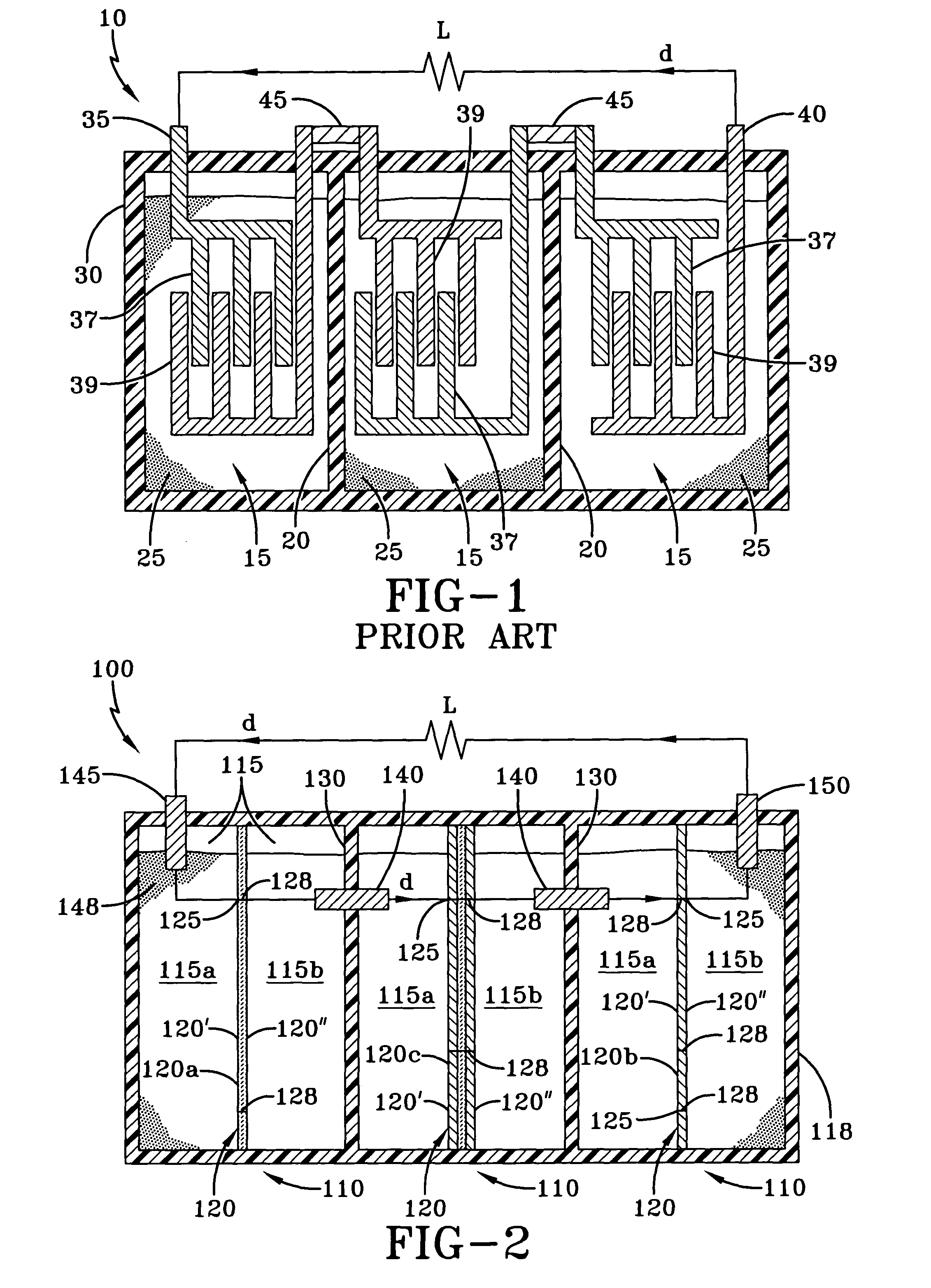Colloidal battery
a colloidal battery and battery plate technology, applied in the field of batteries, can solve the problems of affecting the service life of the second cell, the failure of the conventional lead acid battery, and the failure of the battery plate, etc., and achieves the effects of reducing the weight, increasing the power or output, and increasing the voltag
- Summary
- Abstract
- Description
- Claims
- Application Information
AI Technical Summary
Benefits of technology
Problems solved by technology
Method used
Image
Examples
Embodiment Construction
[0016]Having reference to the drawings, attention is directed first to FIG. 1 which discloses a schematic diagram of a prior art storage battery designated generally by the numeral 10. The battery 10 shown is a six-volt battery comprising three cells 15 connected in series, although it should be appreciated that the number of cells shown is for purposes of example and that the battery made in accordance with the teachings of the prior art could utilize any number of cells.
[0017]Each cell 15 is separated by a cell spacer 20. Each cell is filled with an electrolyte 25, which in the case of lead-acid batteries is typically sulfuric acid, H2SO4. The housing 30 of most batteries is typically plastic, as are the cell spacers 20. Plastic is selected since it does not react with the electrolyte and it tends to resist the corrosive effect of the electrolyte.
[0018]Extending above the housing 30 of the battery 10 is an anode 40 and a cathode 35, with the anode 40 carrying a negative charge and...
PUM
| Property | Measurement | Unit |
|---|---|---|
| emf | aaaaa | aaaaa |
| emf | aaaaa | aaaaa |
| emf | aaaaa | aaaaa |
Abstract
Description
Claims
Application Information
 Login to View More
Login to View More - R&D
- Intellectual Property
- Life Sciences
- Materials
- Tech Scout
- Unparalleled Data Quality
- Higher Quality Content
- 60% Fewer Hallucinations
Browse by: Latest US Patents, China's latest patents, Technical Efficacy Thesaurus, Application Domain, Technology Topic, Popular Technical Reports.
© 2025 PatSnap. All rights reserved.Legal|Privacy policy|Modern Slavery Act Transparency Statement|Sitemap|About US| Contact US: help@patsnap.com


